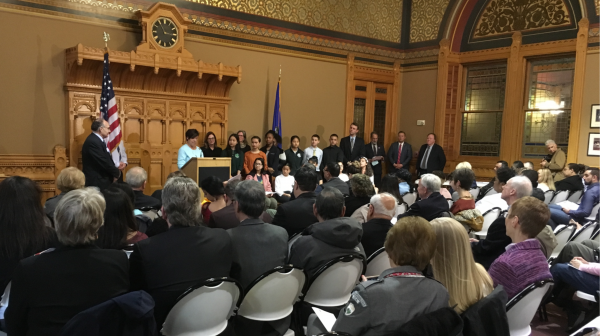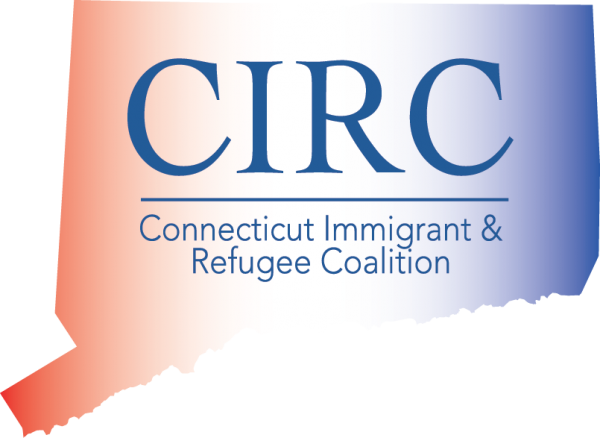CT Has 3rd Highest Catholic Population; 4th Most Jewish Among the States
/Connecticut is the third most Catholic state in America, ranking just behind Rhode Island and New Jersey, in a national analysis by the Gallup organization. Twenty-three percent of all Americans identify as Catholics, but there is wide variation in Catholic representation across states -- ranging from 44 percent in Rhode Island, the most Catholic state in the nation, to 6 percent in Alabama. Connecticut is at 38 percent. Other states with above-average Catholic representation include New York and New Hampshire, and then several more geographically dispersed states including New Mexico, Illinois, California and Wisconsin.
 One of the most significant trends in American religion in recent years, according to Gallup, has been the increase in the percentage of Americans who have no formal religious identity, rising from 15% in 2008 to 21% in 2017. These so-called "nones" are most prevalent in the two most Western states of the U.S., Hawaii and Alaska, and also constitute relatively high proportions of the population in a number of other Western and New England states: Washington, Vermont, Oregon, Maine, Colorado, New Hampshire and California.
One of the most significant trends in American religion in recent years, according to Gallup, has been the increase in the percentage of Americans who have no formal religious identity, rising from 15% in 2008 to 21% in 2017. These so-called "nones" are most prevalent in the two most Western states of the U.S., Hawaii and Alaska, and also constitute relatively high proportions of the population in a number of other Western and New England states: Washington, Vermont, Oregon, Maine, Colorado, New Hampshire and California.
Overall, the Gallup analysis found that Americans continue to be geographically segregated by religion. Protestants dominate in the South, while Catholics are most common in the Northeast and mid-Atlantic, with some representation in the Midwest. Two smaller religious groups are also geographically concentrated: Mormons are a major population factor in Utah and Idaho, and Jews tend to be disproportionately located on the East Coast, the review of religion in America found.
About half of Americans (48%) identify as Protestants or other Christians who are not Catholic or Mormon. Protestants have long been a fixture of the Southern Bible Belt and that trend continued in 2017.
Connecticut has the fourth largest Jewish population, at four percent. Only New York (8%), New Jersey (6%) and Massachusetts (5%) have larger Jewish populations. Nationwide, Americans who identify their religion as Jewish are a small percentage of the U.S. adult population -- about 2% according to Gallup's review of 2017 data.
In a similar survey in 2004, Gallup ranked Connecticut as having the fourth highest Catholic population, at 46 percent, behind Rhode Island, Massachusetts and New Jersey. At that time, the state's Jewish population was the sixth highest percentage among the states, at three percent.


 Fran Rabinowitz has been a dedicated and respected Connecticut educational leader for over 30 years. Prior to her appointment at CAPSS, she served as Associate Commissioner of Education for the State of Connecticut, Superintendent of Hamden Public Schools, and Interim Superintendent of Bridgeport Public Schools.
Fran Rabinowitz has been a dedicated and respected Connecticut educational leader for over 30 years. Prior to her appointment at CAPSS, she served as Associate Commissioner of Education for the State of Connecticut, Superintendent of Hamden Public Schools, and Interim Superintendent of Bridgeport Public Schools.

 If you have a sense that reports of hit-and-run accidents have increased in frequency, you’re correct.
If you have a sense that reports of hit-and-run accidents have increased in frequency, you’re correct. In all states, it’s the drivers legal and moral responsibility to avoid hitting pedestrians, bicyclists, or another vehicle; and leaving a crash scene significantly increases the penalties, whether or not the driver caused the crash, AAA emphasized.
In all states, it’s the drivers legal and moral responsibility to avoid hitting pedestrians, bicyclists, or another vehicle; and leaving a crash scene significantly increases the penalties, whether or not the driver caused the crash, AAA emphasized.
 The Young Entreprenuer of the Year, Alyssa DeMatteo, is a 26 year old Seymour resident who quickly gained popularity in southern Connecticut's cake and cupcake scene when she launched
The Young Entreprenuer of the Year, Alyssa DeMatteo, is a 26 year old Seymour resident who quickly gained popularity in southern Connecticut's cake and cupcake scene when she launched 
 More than 250 attendees will include consultants, coaches, funders, academics, and executives from across the country. The conference intends to “convene the diverse perspectives that shape and advance our field.”
More than 250 attendees will include consultants, coaches, funders, academics, and executives from across the country. The conference intends to “convene the diverse perspectives that shape and advance our field.”
 Stating that “justice should not have an expiration date,” the organization points out that eight states have no statute of limitations for felony sexual assault crimes, and 28 states have a statute of limitations of 21 years or more. Only 10 states, including Connecticut, have a statute of limitation of 10 years or less.
Stating that “justice should not have an expiration date,” the organization points out that eight states have no statute of limitations for felony sexual assault crimes, and 28 states have a statute of limitations of 21 years or more. Only 10 states, including Connecticut, have a statute of limitation of 10 years or less. According to the National Institutes of Health, sexual violence is the leading cause of Post-Traumatic Stress Disorder (PTSD) in women.
According to the National Institutes of Health, sexual violence is the leading cause of Post-Traumatic Stress Disorder (PTSD) in women. 
 The five dimensions, mentioned above, were weighted to determine an overall score on a 100 point scale using thirty relevant metrics including the cost of living, rate of home ownership and insurance, average student loan debt, voter turnout rate, unemployment rate, percentage diagnosed with depression and the average price of a latte at Starbucks.
The five dimensions, mentioned above, were weighted to determine an overall score on a 100 point scale using thirty relevant metrics including the cost of living, rate of home ownership and insurance, average student loan debt, voter turnout rate, unemployment rate, percentage diagnosed with depression and the average price of a latte at Starbucks.
 Topping the national rankings were Falls Church, Virginia; Douglas County, Colorado; Broomfield County, Colorado; Los Alamos County, New Mexico; and Dukes County, Massachusetts.
Topping the national rankings were Falls Church, Virginia; Douglas County, Colorado; Broomfield County, Colorado; Los Alamos County, New Mexico; and Dukes County, Massachusetts. 
 In comparing the average annual opioid-related death rates per 100,000 population in 2012-13, 2014-15, and 2016-17, the dramatic increases across communities statewide is quite evident. The data analysts point out that data are where deaths from 'any opioid' (meaning some type of opioid were found in the person) take place. Therefore, they explain, one would expect to see higher rates in places with large hospitals (hence high rates in cities). They add that one can also not discount that these places are also seeing higher rates among its residents.
In comparing the average annual opioid-related death rates per 100,000 population in 2012-13, 2014-15, and 2016-17, the dramatic increases across communities statewide is quite evident. The data analysts point out that data are where deaths from 'any opioid' (meaning some type of opioid were found in the person) take place. Therefore, they explain, one would expect to see higher rates in places with large hospitals (hence high rates in cities). They add that one can also not discount that these places are also seeing higher rates among its residents.
 The Connecticut Data Collaborative has posted on its
The Connecticut Data Collaborative has posted on its 
 Sixth-graders from the Interdistrict School for Arts and Communication in New London were recognized for their project, “Community Faces-Humanizing the Immigrant Label,” parts of which were on display at the Capitol. The second group was Teens4Citizenship, a Hartford Public Library and Hartford Public Schools collaborative program. As "Citizenship Guides," these high school immigrant students support family and community members on the path to Citizenship and upon turning 18 pursue their own citizenship.
Sixth-graders from the Interdistrict School for Arts and Communication in New London were recognized for their project, “Community Faces-Humanizing the Immigrant Label,” parts of which were on display at the Capitol. The second group was Teens4Citizenship, a Hartford Public Library and Hartford Public Schools collaborative program. As "Citizenship Guides," these high school immigrant students support family and community members on the path to Citizenship and upon turning 18 pursue their own citizenship.


























